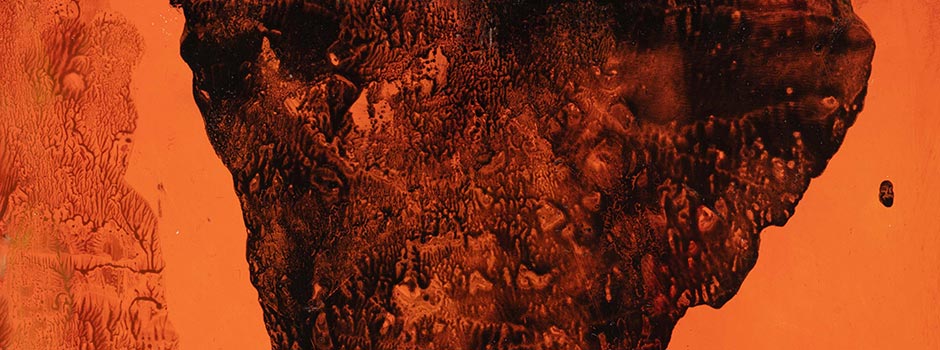
The Third Line at Art Dubai 2023 (3 – 5 March 2023) Laleh Khorramian and Monir Shahroudy Farmanfarmaian at Art Dubai 2023
Mar 03, 2023 EVENT, Art Fair

Laleh Khorramian (b. 1974 Tehran, Iran) presents a hall of small paintings: oil on panel and linen works flanking one side of the booth and stretched mixed media fabric works on the other. Holding court at the centre is Mother of Glass (2021), which was first exhibited at the Baltic Centre for Contemporary Art as part of The Vasseur Baltic Artists' Award 2022.
The suite of small paintings exists in a state of rotation around the command of her femininity. Each piece is layered with the mercurial methodologies of Khorramian’s practice – from oil to fabric, carving to stitching. Paramount is the artist's hand; her paintings are rendered with exquisite detail and depth, and her sewn compositions are collages of painted fabrics with stencilled patterns and found textures. All of the works touch on both abstraction and surrealism, the effect of which is both haunting and transportative.
Laleh Khorramian (b. 1974 Tehran, Iran) studied at the Rhode Island School of Design (Providence, RI), received her undergraduate degree at The School of The Art Institute of Chicago (Chicago, IL), and her MFA at Columbia University (New York, NY). Khorramian has exhibited internationally in both solo and group exhibitions, including but not limited to Perpetual Inventory, Volume 1: An Exercise in Looking curated by Dr Omar Kholeif, The Third Line, Dubai, UAE (2022); The Vasseur Baltic Artists' Award 2022, Baltic Centre for Contemporary Art, Gateshead, UK; The Refracted Body, Liverpool Biennale, Liverpool, UK (2021); Earthly, Esther Massry Gallery, The College of Saint Rose, Albany, NY, USA (2021); Sentients, Fine Art Center Gallery, University of Arkansas, Arkansas, USA (2020); Drawn: Concept and Craft, Southeastern Center for Contemporary Art, Winston Salem, NC, USA (2020); Unearth, September Gallery, Hudson, New York, USA (2019); Saturns Neckless, The Third Line, Dubai, UAE (2016); Midnight Moment: Laleh Khorramian, Times Square, New York, USA (2014); to name a few.
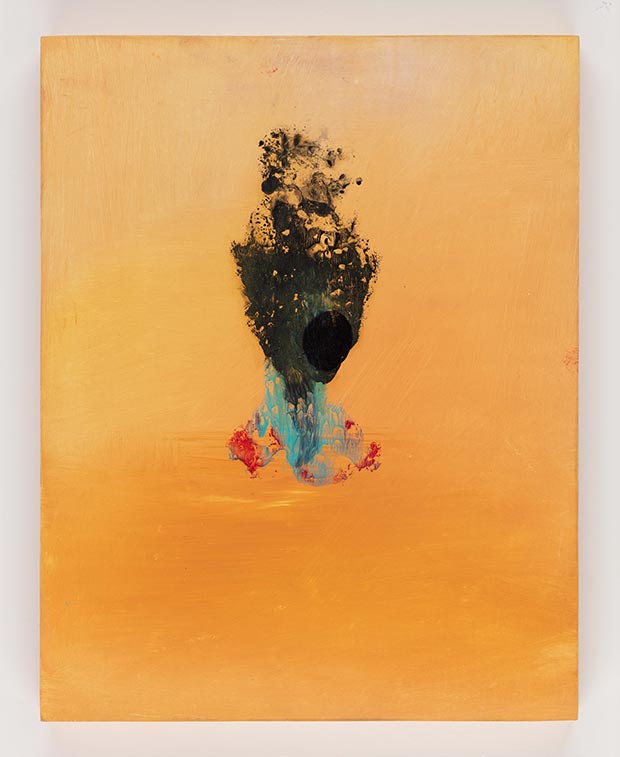 Laleh Khorramian, Relics from dream. 2023. 35.56 x 27.94 x 3.56 cm / Courtesy of the artist and The Third Line, Dubai
Laleh Khorramian, Relics from dream. 2023. 35.56 x 27.94 x 3.56 cm / Courtesy of the artist and The Third Line, Dubai
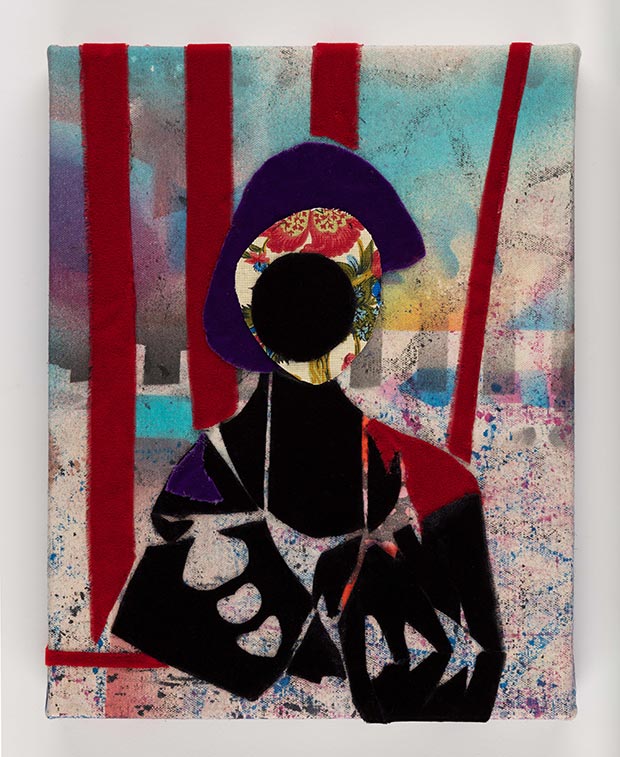 Laleh Khorramian, Mother of its, 2023, Acrylic, cotton, velvet on canvas, 35.56 x 27.94 x 3.81 cm / Courtesy of the artist and The Third Line, Dubai
Laleh Khorramian, Mother of its, 2023, Acrylic, cotton, velvet on canvas, 35.56 x 27.94 x 3.81 cm / Courtesy of the artist and The Third Line, Dubai
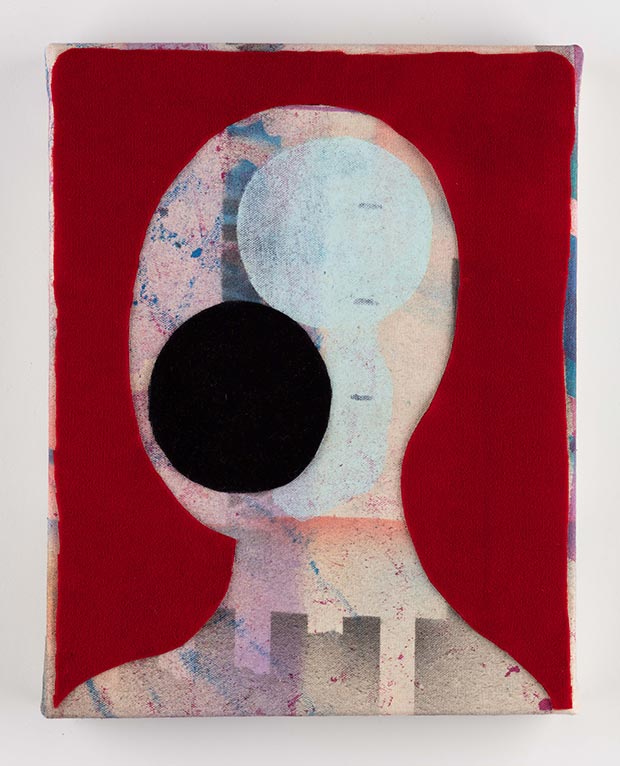 Laleh Khorramian, Red no one, 2023, Acrylic, velvet on canvas, 35.56 x 27.94 x 3.81 cm / Courtesy of the artist and The Third Line, Dubai
Laleh Khorramian, Red no one, 2023, Acrylic, velvet on canvas, 35.56 x 27.94 x 3.81 cm / Courtesy of the artist and The Third Line, Dubai
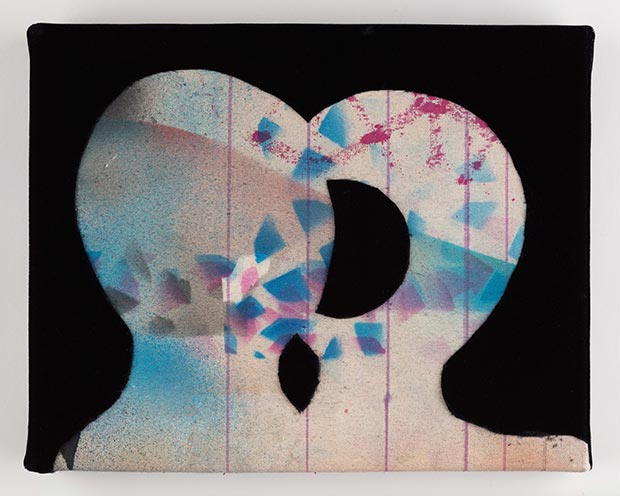 Laleh Khorramian, Calling, 2023, Acrylic, velvet on canvas, 27.94 x 35.56 x 3.81 cm / Courtesy of the artist and The Third Line, Dubai
Laleh Khorramian, Calling, 2023, Acrylic, velvet on canvas, 27.94 x 35.56 x 3.81 cm / Courtesy of the artist and The Third Line, Dubai
 Laleh Khorramian, Red swell, 2023, Oil on panel, 35.56 x 27.94 x 3.56 cm / Courtesy of the artist and The Third Line, Dubai
Laleh Khorramian, Red swell, 2023, Oil on panel, 35.56 x 27.94 x 3.56 cm / Courtesy of the artist and The Third Line, Dubai
For over half a century, the practice of the late Monir Shahroudy Farmanfarmaian (b. 1922 Qazvin, Iran, d. 2019 Tehran, Iran) has incorporated principles of Islamic geometry with a contemporary sensibility. Blending the characteristics of ornamentation found in Iranian architecture with the aesthetics of modern and abstract expressionism, Farmanfarmaian’s unconventional melange of past and present has resulted in an oeuvre that spans many mediums. The presentation reflects upon these different facets and materials of her geometric practice. It features a range of drawings, carpets, and iconic mirror works to demonstrate the depth of Farmanfarmaian’s conceptual consideration throughout her career and medium.
Farmanfarmaian is best known for her mirror mosaic sculptural works, whereby fragments of reverse-painted, reflective glass are arranged into compositions that reflect Islamic geometry. Derived from the Iranian decorative technique aineh-kari, which dates back to the sixteenth century, the artist pushes beyond the craft to explore the forms of the medium and experiment with the infinite possibilities of creation the geometrical forms allow her.
Farmanfarmaian carries these same principles into her works on paper and textile. The drawings presented at Art Dubai this year are some of her earlier works from the 1990s that were produced while the artist was in exile in New York following the Islamic Revolution in Iran in 1979. These works on paper are notably whimsical, many of which became prototypes for carpets that were made by hand in Tabriz and Bijar, Iran. These wool and naturally dyed silk carpets present a unique insight into her experiments in the material.
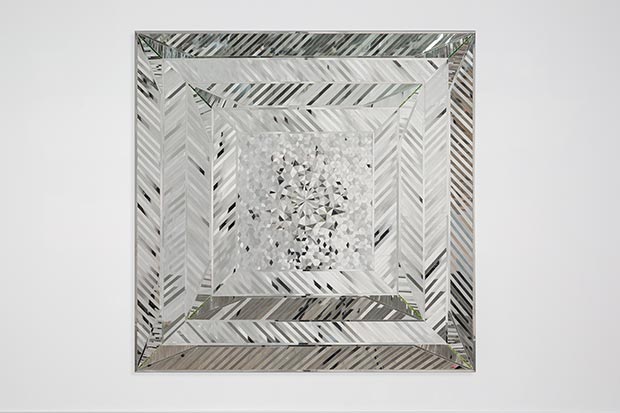 Monir Shahroudy Farmanfarmaian, Qazvin, 2006, Mosaic Mirrors, Reverse Glass Painting, 110.00 x 110.00 x 4.00 cm / Courtesy of the artist estate and The Third Line, Dubai
Monir Shahroudy Farmanfarmaian, Qazvin, 2006, Mosaic Mirrors, Reverse Glass Painting, 110.00 x 110.00 x 4.00 cm / Courtesy of the artist estate and The Third Line, Dubai
_1993.jpg) Monir Shahroudy Farmanfarmaian, Untitled (C2), 1993, Naturally dyed silk and wool hand-woven in Tabriz, 99 x 172 cm / Courtesy of the artist estate and The Third Line, Dubai
Monir Shahroudy Farmanfarmaian, Untitled (C2), 1993, Naturally dyed silk and wool hand-woven in Tabriz, 99 x 172 cm / Courtesy of the artist estate and The Third Line, Dubai
_1993.jpg) Monir Shahroudy Farmanfarmaian, Untitled (D34), 1993, Felt tip marker on paper, 35 x 41.5 cm / Courtesy of the artist estate and The Third Line, Dubai
Monir Shahroudy Farmanfarmaian, Untitled (D34), 1993, Felt tip marker on paper, 35 x 41.5 cm / Courtesy of the artist estate and The Third Line, Dubai
_1993.jpg) Monir Shahroudy Farmanfarmaian, Untitled (D36), 1993, Felt tip marker on paper, 35 x 42 cm / Courtesy of the artist estate and The Third Line, Dubai
Monir Shahroudy Farmanfarmaian, Untitled (D36), 1993, Felt tip marker on paper, 35 x 42 cm / Courtesy of the artist estate and The Third Line, Dubai
The work of Monir Shahroudy Farmanfarmaian (b. Qazvin, Iran, 1924 - d. 2019) has been exhibited extensively in Iran, the USA, Europe, and the Middle East since the 1960s. Recent solo exhibitions include Monir Farmanfarmaian: A Mirror Garden, High Museum of Art, Atlanta, United States (2023); Sunset Sunrise, Irish Museum of Modern Art, Dublin, Ireland (2018), which travelled to Sharjah Art Foundation, United Arab Emirates (2019); Mirror Variations: The Art of Monir Shahroudy Farmanfarmaian, Grand Rapids Art Museum, Michigan, United States (2018); Lineages, Savannah College of Art and Design Museum of Art, Savannah, Georgia, United States (2017); Monir Shahroudy Farmanfarmaian: Infinite Possibility. Mirror Works and Drawings, 1974-2014, Serralves Museum of Contemporary Art, Porto, Portugal (2014), which travelled to Solomon R. Guggenheim Museum, New York, United States (2015); and Chrysler Museum of Art, Norfolk, Virginia, United States (2017); Monir Shahroudy Farmanfarmaian: Convertibles and Polygons, The Museum of Fine Arts, Houston, Texas, United States (2013); Monir Shahroudy Farmanfarmaian: Mirror Mosaics, Victoria and Albert Museum, London, United Kingdom (2007).
Farmanfarmaian participated in the 2009 and 1964 Venice Biennales and represented Iran in the 1958 Venice Biennale, where she was awarded the Gold Medal for her contribution. Other recent biennials include Bruges Triennial 2018, Belgium (2018); the 11th Gwangju Biennale, South Korea (2016); the 2015 Vienna Biennale, Austria (2015); Sharjah Biennial 11: Re:emerge, Towards a New Cultural Cartography, Sharjah Art Foundation, United Arab Emirates (2013); and the 29th Bienal de São Paulo, Brazil (2010).
Farmanfarmaian's work is housed in several major public collections, including the Alfond Collection of Contemporary Art, Cornell Fine Arts Museum, Rollins College, Winter Park, Florida, USA; The Andy Warhol Museum, Pittsburgh, Pennsylvania, USA; Guggenheim Museum, Abu Dhabi, UAE; High Museum of Art, Atlanta, Georgia, USA; Hirshhorn Museum and Sculpture Garden, Washington, USA; Louis Vuitton Foundation, Paris, France; M+ Museum, Hong Kong; McNay Art Museum, San Antonio, Texas, USA; Metropolitan Museum of Art, New York, USA; Monir Museum, Negarestan Museum Park Gardens, Tehran, Iran; Museum of Contemporary Art, Tokyo, Japan; Museum of Contemporary Art, Chicago, Illinois, USA; Museum of Fine Arts, Boston, Massachusetts, USA; Museum of Fine Arts, Houston, Texas, USA; Museum of Modern Art, Tehran, Iran; Niavaran Cultural Center, Tehran, Iran; Queensland Gallery of Contemporary Art, Queensland, Australia; Sharjah Art Foundation, Sharjah, UAE; Solomon R. Guggenheim Museum, New York, USA; Tate Modern, London, UK; Tehran Museum of Contemporary Art, Tehran, Iran; Toledo Art Museum, Toledo, Ohio, USA; Victoria and Albert Museum, London, UK.
Founded in 2005, The Third Line is a Dubai-based gallery that represents contemporary Middle Eastern artists locally, regionally, and internationally. A pioneering platform for established talent and emerging voices from the region and its diaspora, The Third Line has built a dynamic program that explores the diversity of practice in the region. In addition to its exhibitions, The Third Line engages in the production of art publications in English and Arabic and hosts numerous non-profit, alternative programs that add to the discourse on art, film, music and literature in the region. Represented artists include Abbas Akhavan, Ala Ebtekar, Amir H. Fallah, Farah Al Qasimi, Farhad Moshiri, Fouad Elkoury, Hassan Hajjaj, Hayv Kahraman, Huda Lutfi, Joana Hadjithomas & Khalil Joreige, Jordan Nassar, Laleh Khorramian, Lamya Gargash, Monir Shahroudy Farmanfarmaian, Nima Nabavi, Pouran Jinchi, Rana Begum, Sahand Hesamiyan, Sara Naim, Shirin Aliabadi, Slavs and Tatars, Sophia Al-Maria, Tarek Al-Ghoussein, yasiin bey and Youssef Nabil.
Comments
Add a comment